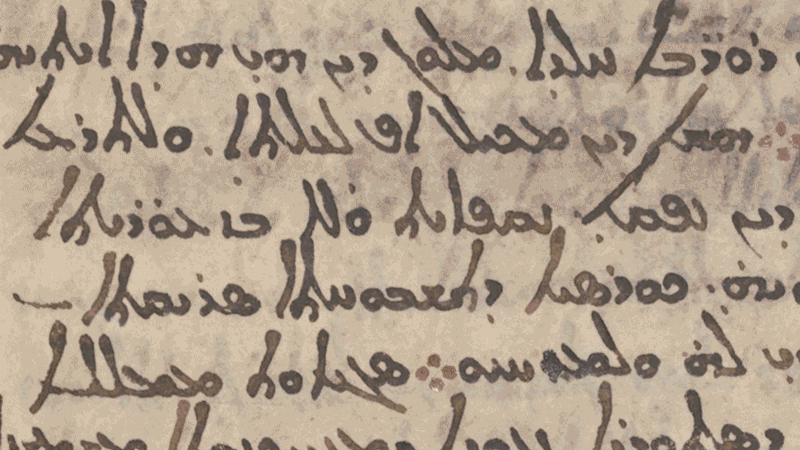While looking over photos of an ancient manuscript during the COVID-19 lockdown, a historian discovered what is thought to be the oldest known map of the stars hidden beneath a medieval Christian text. The map may in fact be the work of Greek astronomer Hipparchus (190-120 BCE), who mapped the stars centuries before any other known attempts, and whose long-lost Star Catalogue has been searched for for centuries.
The manuscript was found in the Greek Orthodox St Catherine’s Monastery in the Sinai Peninsula, Egypt, and contained Syriac texts from the 10th-11th centuries (now owned by Washington DC’s Museum of the Bible). However, the texts had been written on parchment that had been scraped clean and reused, known as a palimpsest, and underneath was thought to contain older Christian texts.
In 2012, Dr Peter Williams of the University of Cambridge set his students the task of studying the pages. While looking through the texts, one student found a passage in Greek, which is often attributed to astronomer and polymath Eratosthenes.
Following the discovery, the pages were reanalyzed using multispectral imaging, photographing the pages in various wavelengths of light, before using algorithms to combine the images in a way that enhanced the hidden text which had been overwritten in the 10-11th centuries.
While looking through photographs of the text – which was found to contain myths explaining the origin of the stars by Eratosthenes written down in the fifth or sixth centuries – Williams noticed a part of the script that made him contact experts at the French National Scientific Research Centre (CNRS) in Paris. It appeared he had found ancient star coordinates.

A montage showing palimpsest under normal lighting, multipsectral analysis, and a reconstrcution of the hidden text. Image credit: Museum of the Bible CC BY-SA 4.0, photo by Early Manuscripts Electronic Library/Lazarus Project, University of Rochester; multispectral processing by Keith T. Knox; tracings by Emanuel Zingg
As the planet wobbles slightly on its axis as it spins (in about a 26,000-year cycle known as precession), the way the stars appear in the night sky shift by about 1 degree every 75 years. This means that by using modern maps of the night sky and modeling backward, the researchers were able to see when the initial observations were made. The team found that the coordinates of the stars provided fit that of around 129 BCE when Hipparchus was working. This method of locating the time of the star map is especially pleasing, as it was Hipparchus himself who discovered precession.
Scholars have been searching for Hipparchus’s Star Catalogue for centuries. Ancient texts reference Hipparchus mapping the stars, but no previous transcriptions of this work had been found, with some suggesting that it may not have existed. Everyone’s favorite astronomer (fight me) Tycho Brahe suggested that Ptolemy had stolen Hipparchus’ work, before going on to accuse Ptolemy of fabricating other observations.
The team believes that co-ordinates for several major constellations found in later work must have come from Hipparchus too, but that the evidence suggests Ptolemy had not stolen Hipparchus’ co-ordinates, largely because Hipparchus’ work was a lot more accurate than Ptolemy’s.
“The new fragment makes this much, much clearer,” says Mathieu Ossendrijver, a historian of astronomy at the Free University of Berlin, in Nature. “This Star Catalogue that has been hovering in the literature as an almost hypothetical thing has become very concrete.”
The team hopes that the imaging technique will be used on further texts, including the thousands of other reused parchments in libraries around Europe, perhaps revealing more star coordinates to study.
The study was published in the Journal for the History of Astronomy.
Source Link: Oldest Known Map Of The Stars Found Hidden Inside A Medieval Manuscript